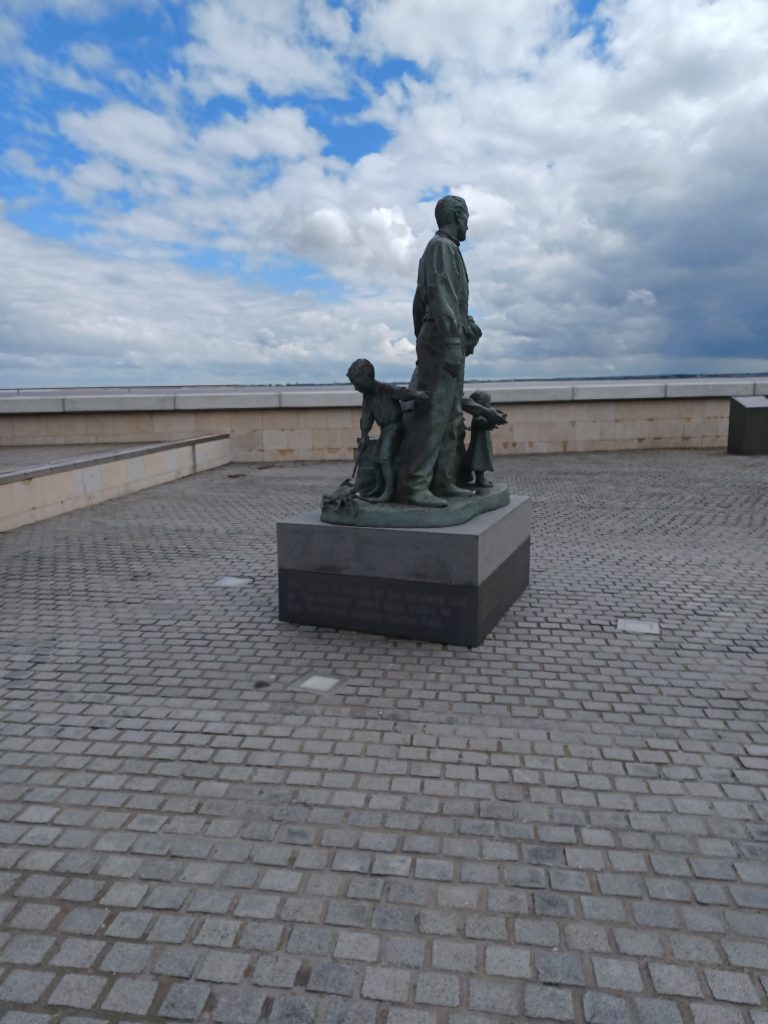
I think that, for some reason , this set-up can only present pictures taken landscape rather than portrait, anyway, again apologies. The photo above shows a statue near to the entrance lock to Humber Dock, now Hull’s Marina, and standing behind the flood defence wall of the Humber Estuary bank itself. The statue shows two parents and two young children with travelling bags. It was commissioned to symbolise the two and a half million east and north European migrants who passed through the port of Hull between the 1830s and the early 20th century as migrants en-route to America. Once the early railway network reached Hull the economic migrants, or in the case of the Jewish travellers asylum seekers, would disembark ship at Hull (having crossed the German Ocean, now North Sea), make their way to the rail station and take the train to possibly London, Southampton or, more usually, to Liverpool. Here they would again board ship for the trans-Atlantic crossing. Although this sounds like a very expensive venture for economic migrants such journeys were mostly arranged by ’emigration agents’ in the countries of origin and they had probably been taking weekly subscriptions for some time from prospective migrants. There were emigration agents in England also, including those in Hull, Lincolnshire and the East Riding. The statue shown above is in an area of the Humber bank known as the ‘Bullnose’, at which point migrant ships often had to anchor to await the tide which would take them into Humber Dock lock (this similar to the ‘groundings’ in Beverley Beck – s.p.b.).
Secondly, passenger ferries sailing from the River Ouse ports, Goole (after the 1820s), Selby and York, into the Humber often ran to timetables that took no account of the tides and therefore many were regularly ‘grounded’ on mudflats in the upper Estuary. As the tide rose passengers were requested to move together from one side of the boat to the other to assist re-floating (see ‘Historic Blacktoft’).